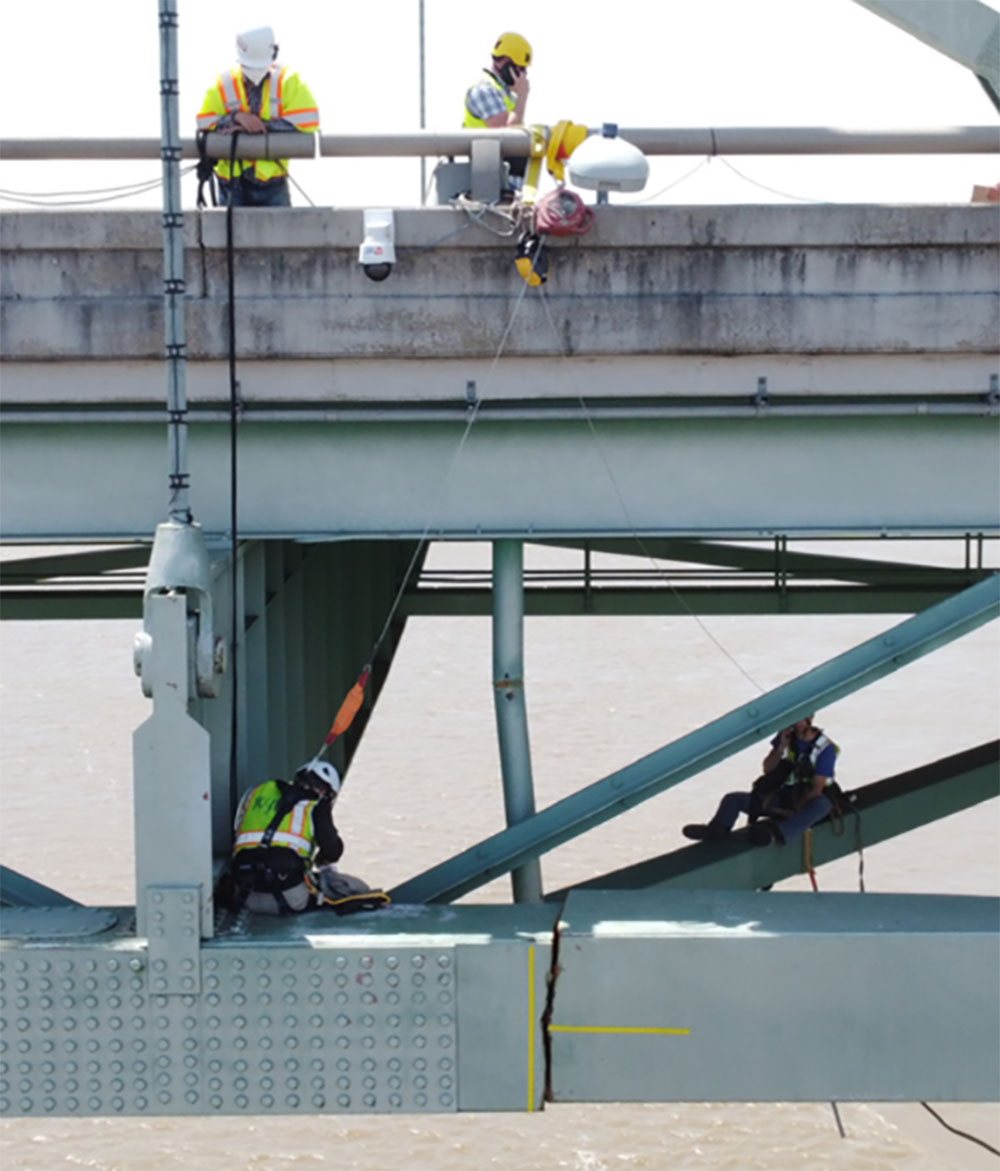Among the nearly 20,000 bridge structures in Tennessee, the I-40 Hernando DeSoto and the I-55 Memphis-Arkansas bridges are the only two that connect Tennessee and Arkansas across the Mississippi River. They collectively support 75,000 vehicles per day. The bridges also serve as key commercial freight corridors, supporting the movement of $400 billion in goods and $9.2 billion in annual economic impact generated by the Port of Memphis. The Departments of Transportation for Arkansas (ArDOT) and Tennessee (TDOT) share responsibilities such as maintenance, repairs, and inspection of these bridges.
In May of 2021, a routine inspection revealed a fracture along the I-40 Hernando DeSotobridge, forcing an immediate closure to all six interstate lanes over the river. A day after the closure, eastbound traffic along the only alternate, I-55, increased from 15 minutes to 70+ minutes during peak periods. Westbound traffic increased from 15 to 50 minutes during the evening peak period.

This fracture along the Hernando DeSoto bridge required closure to repair. (Credit: TDOT)
Crowdsourced data played a key role in the immediate and long-term response to the emergency bridge closure. Vehicle probe-based crowdsourced data helped TDOT better collaborate with agencies to define, adjust, and improve diversion plans throughout the duration of the I-40 bridge closure. Collaborating with the City of Memphis, ArDOT, and others, TDOT modified traffic signal timing plans, deployed portable changeable message signs, and made other adjustments to traffic operations. TDOT used crowdsourced and roadside sensor data to assess the effects of adjustments and make further changes to steadily reduce delays and more quickly clear incidents along detour routes.
TDOT also used vehicle probe-based crowdsourced data to share travel delay estimates with motorists, which helped them better plan their commutes by day of the week. Additionally, TDOT shared changes to operations (e.g., lane closures) with Waze®, a navigation application provider, enhancing the reach of traveler and public information efforts.
The collective outcomes from using crowdsourced data for operational adjustments and traveler information are safer and more reliable travel for all road users in the Memphis region. To learn more about TDOT’s use of crowdsourced data to improve emergency operations, download the Tennessee DOT case study or view the September 2023 Talking TIM webinar.
To learn more about crowdsourcing, contact James Colyar, FHWA Office of Operations, Greg Jones, FHWA Resource Center, or Ralph Volpe, FHWA Resource Center.
